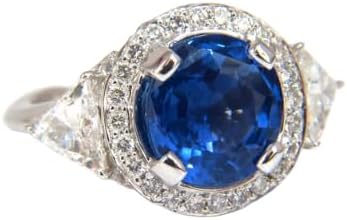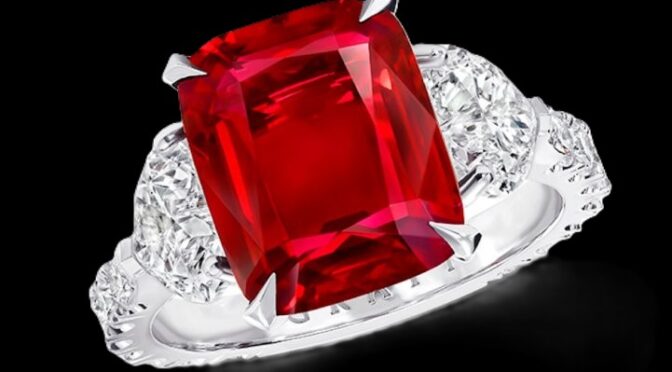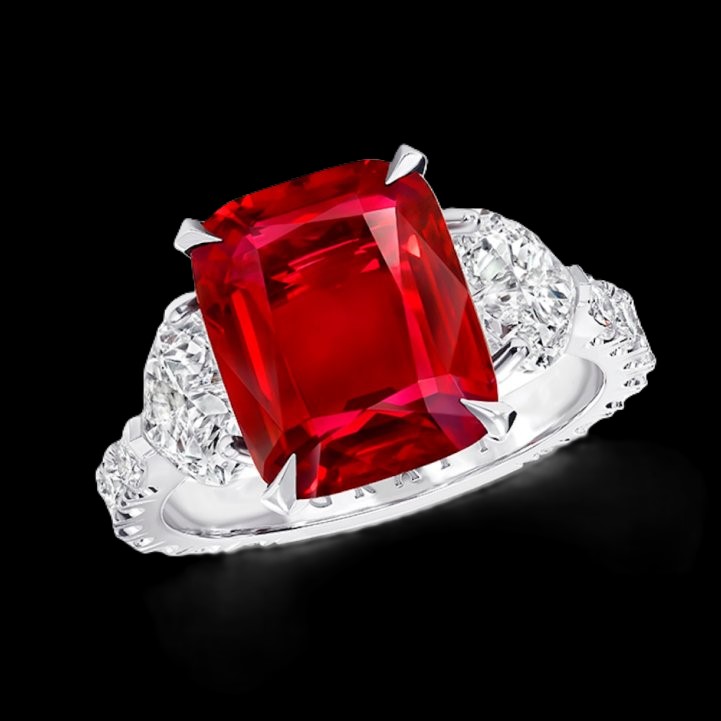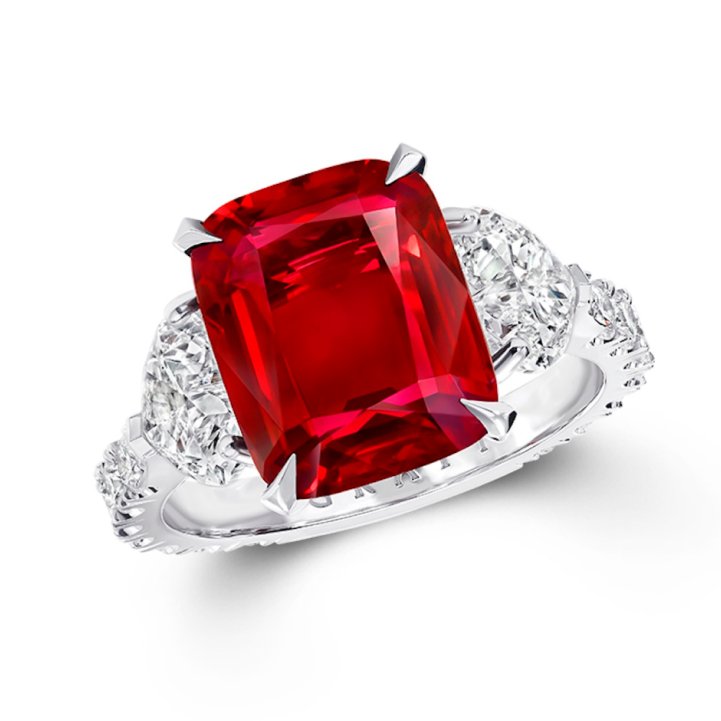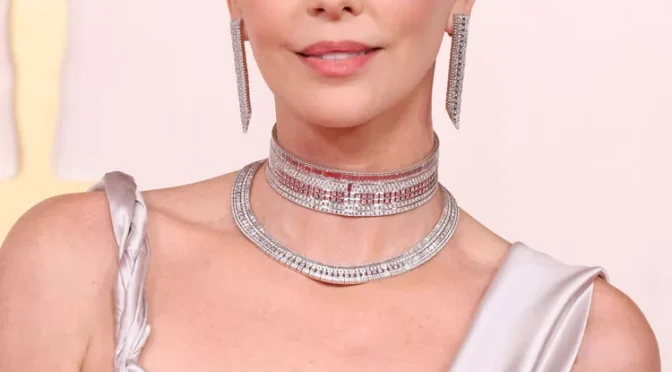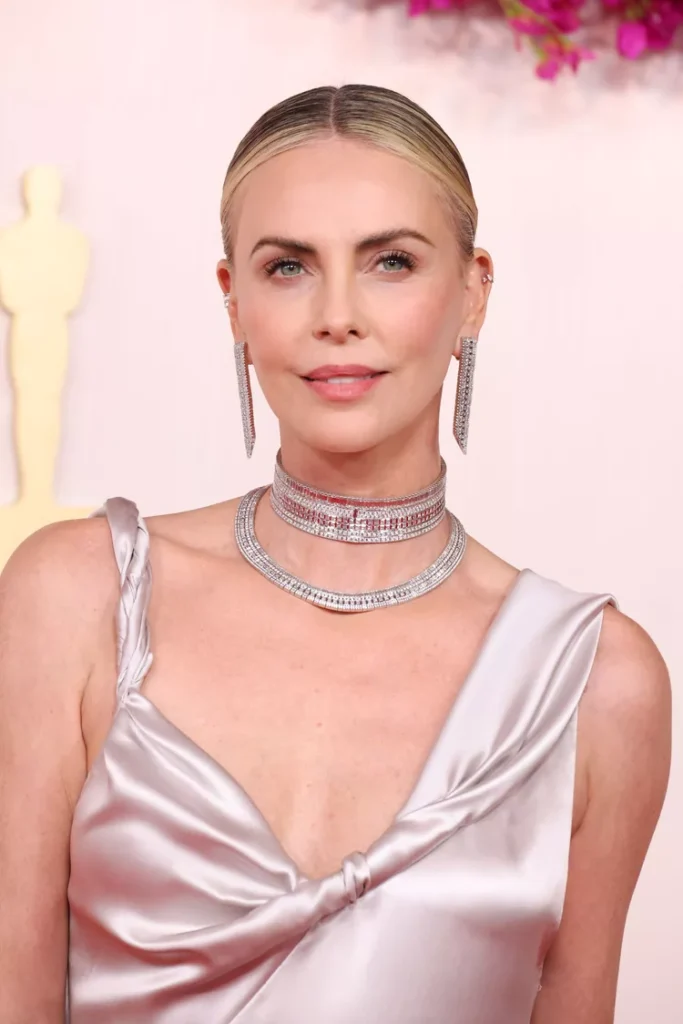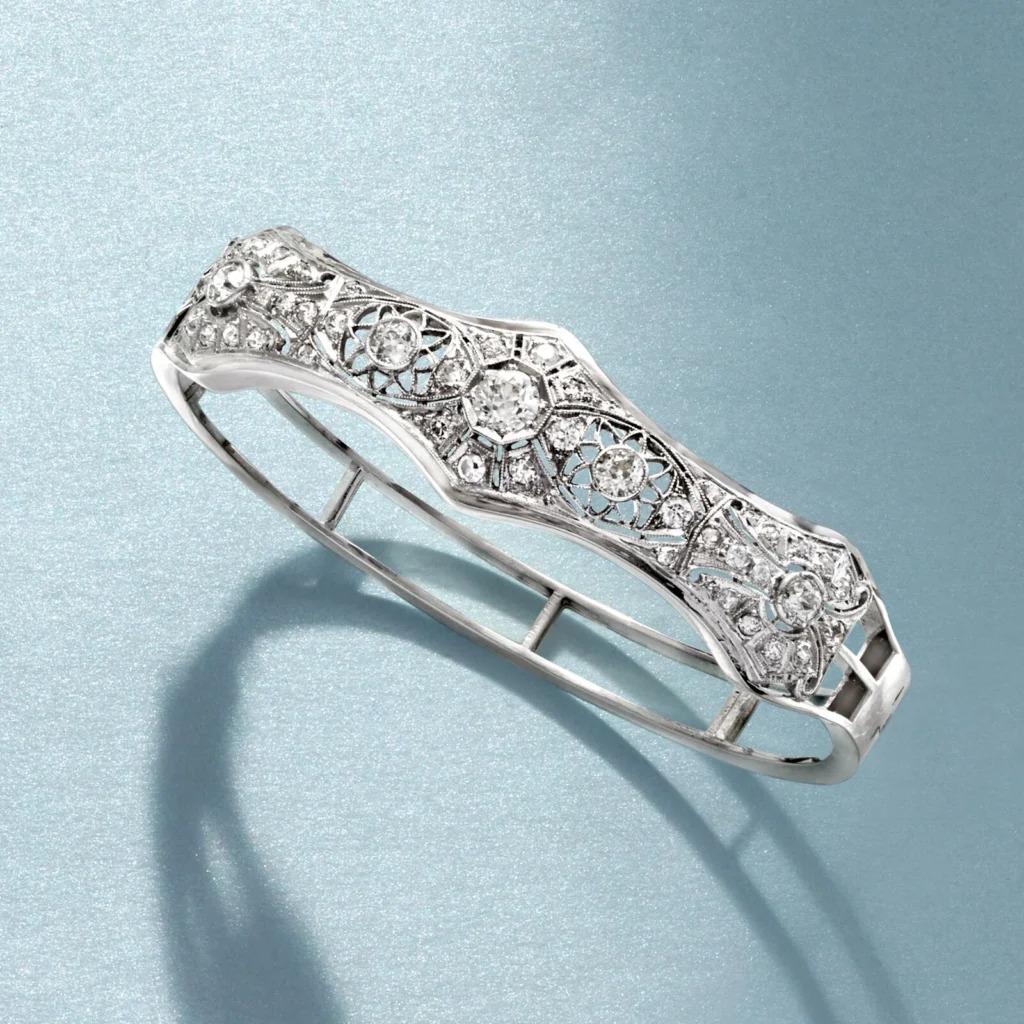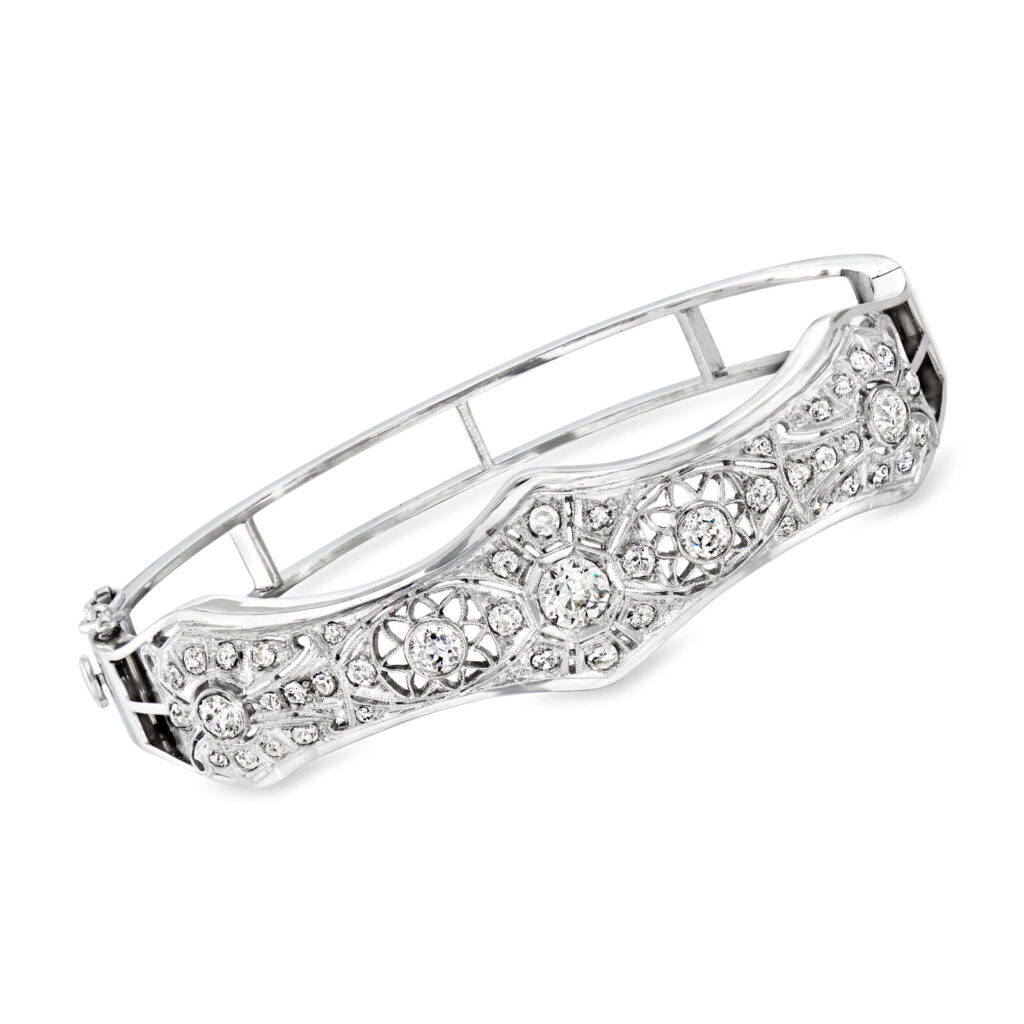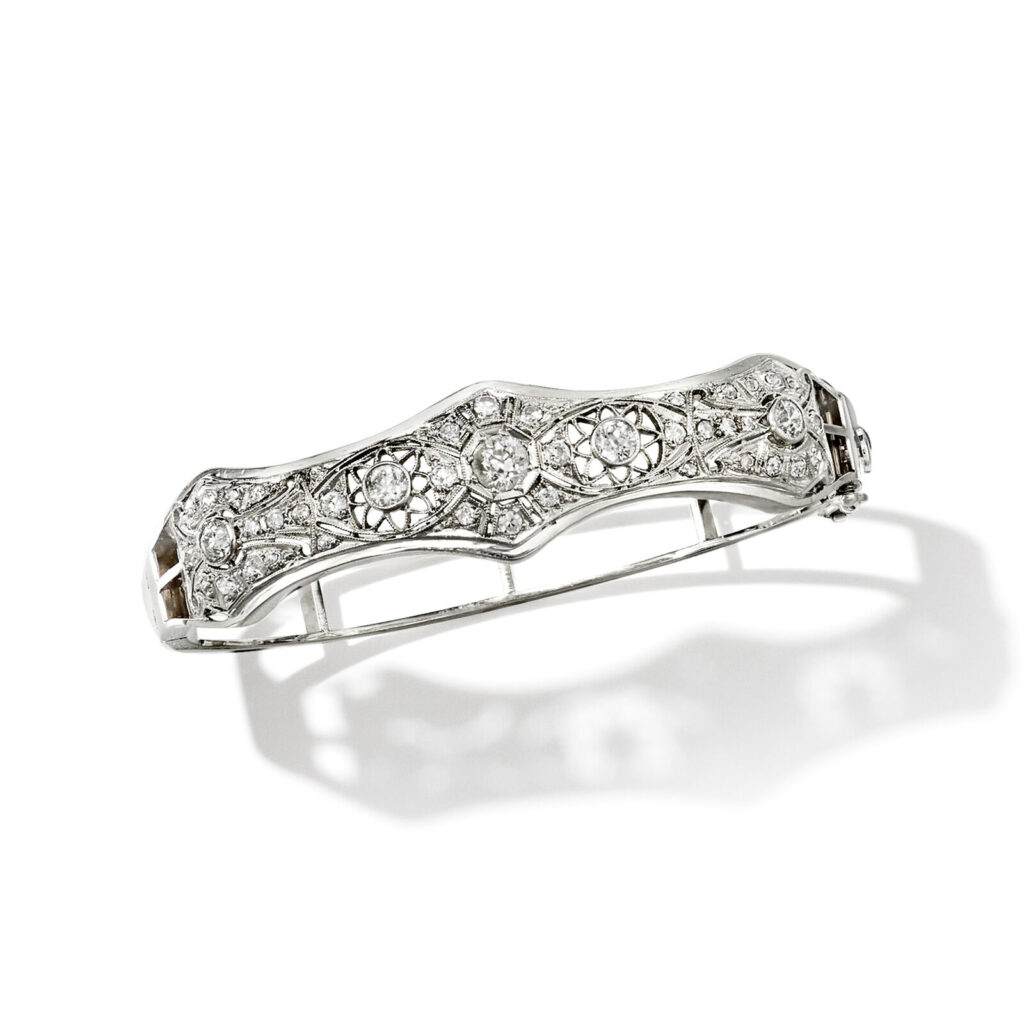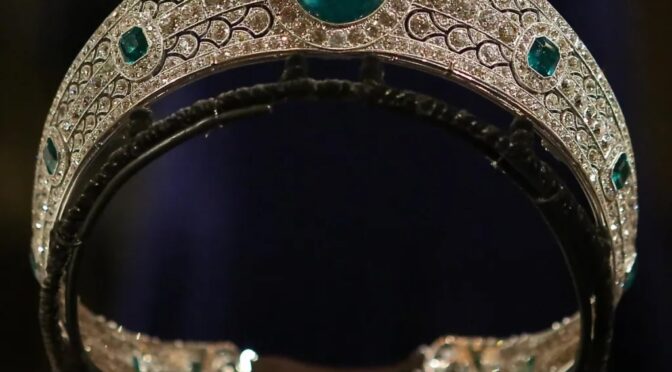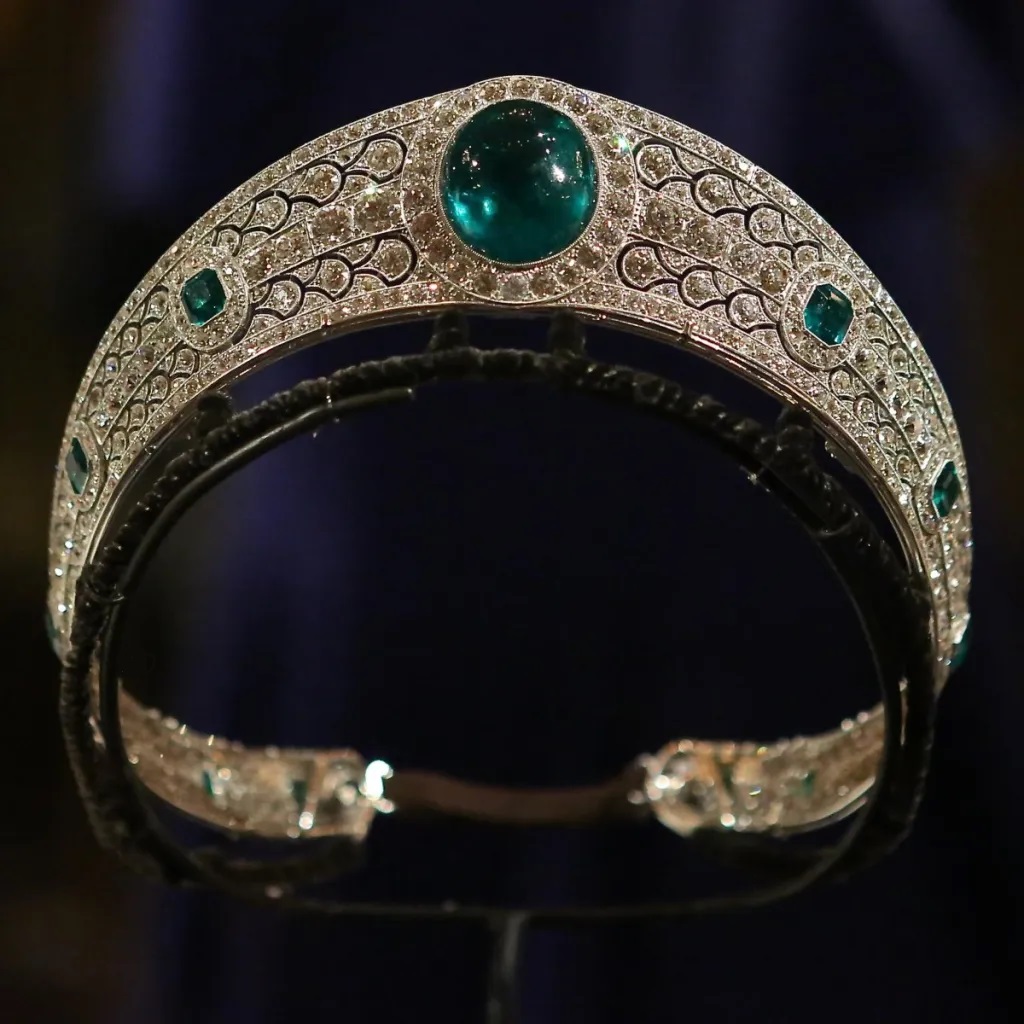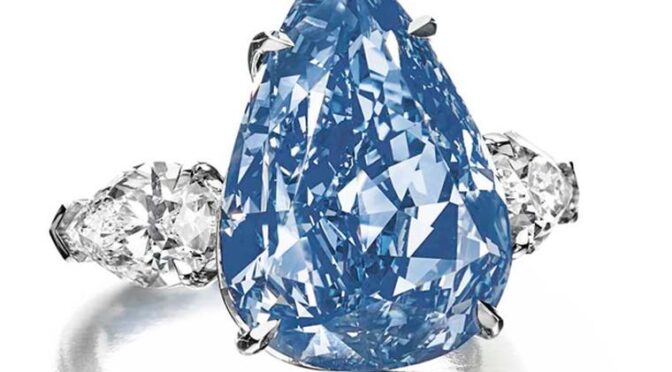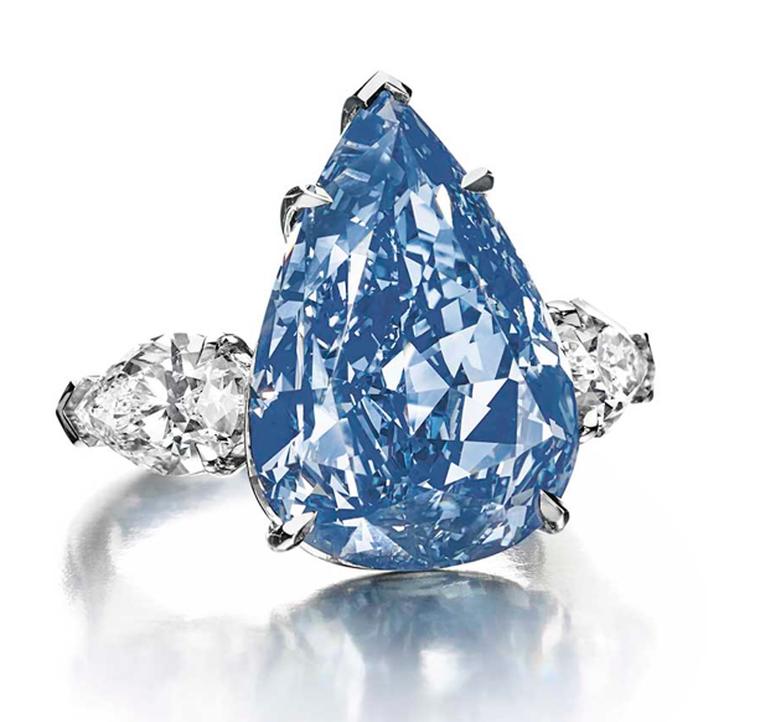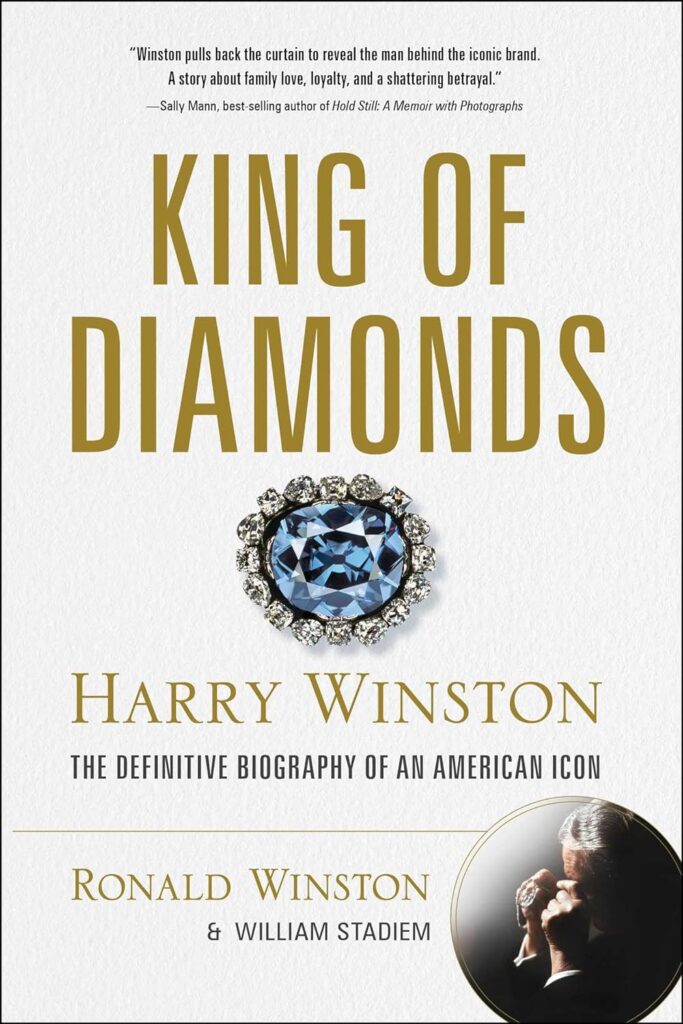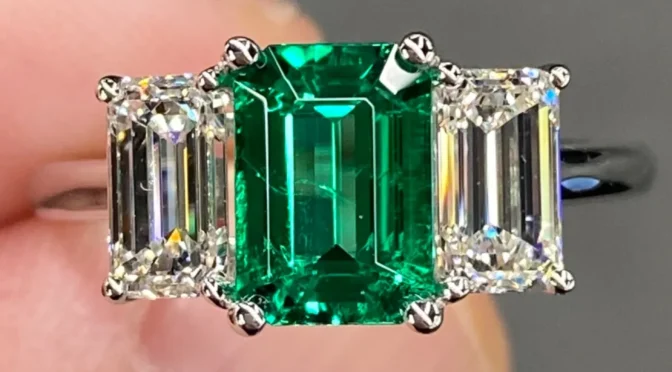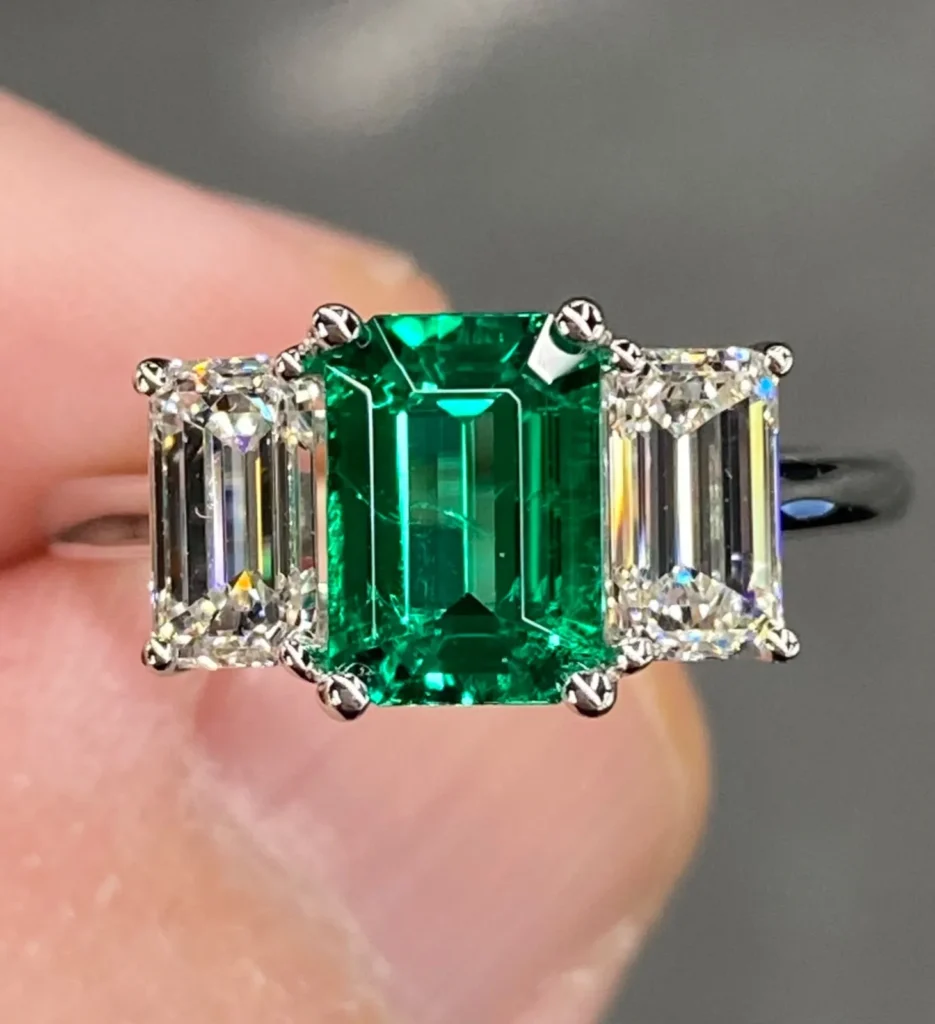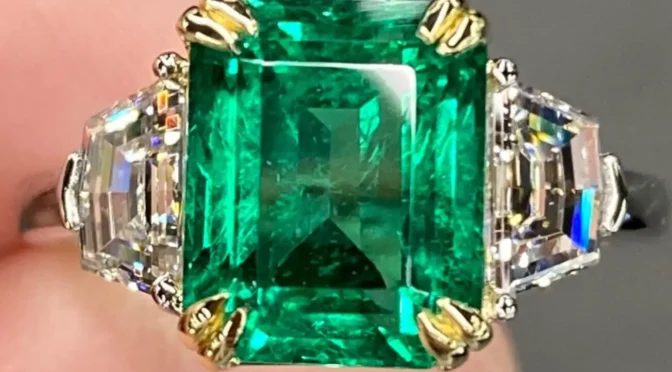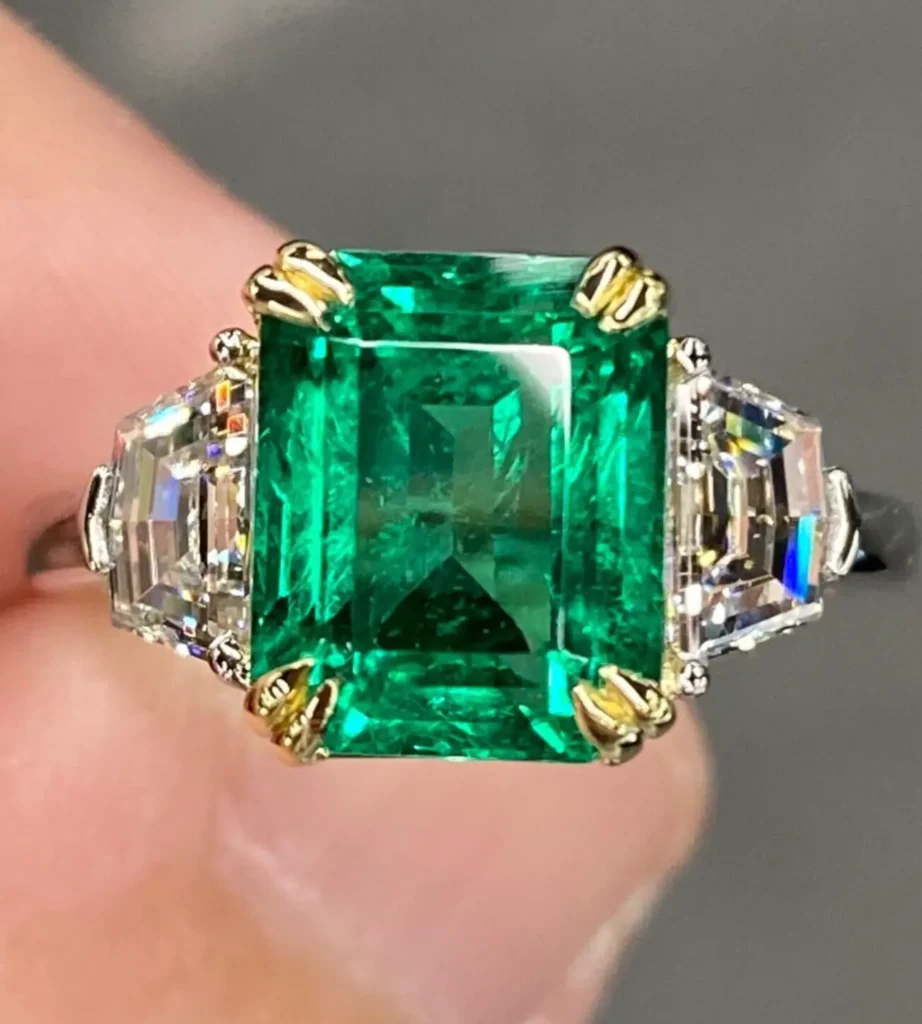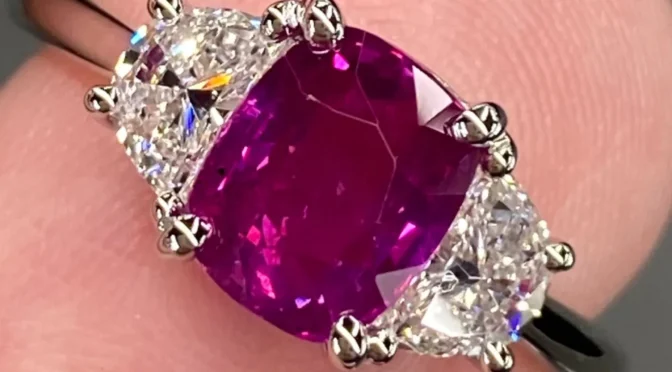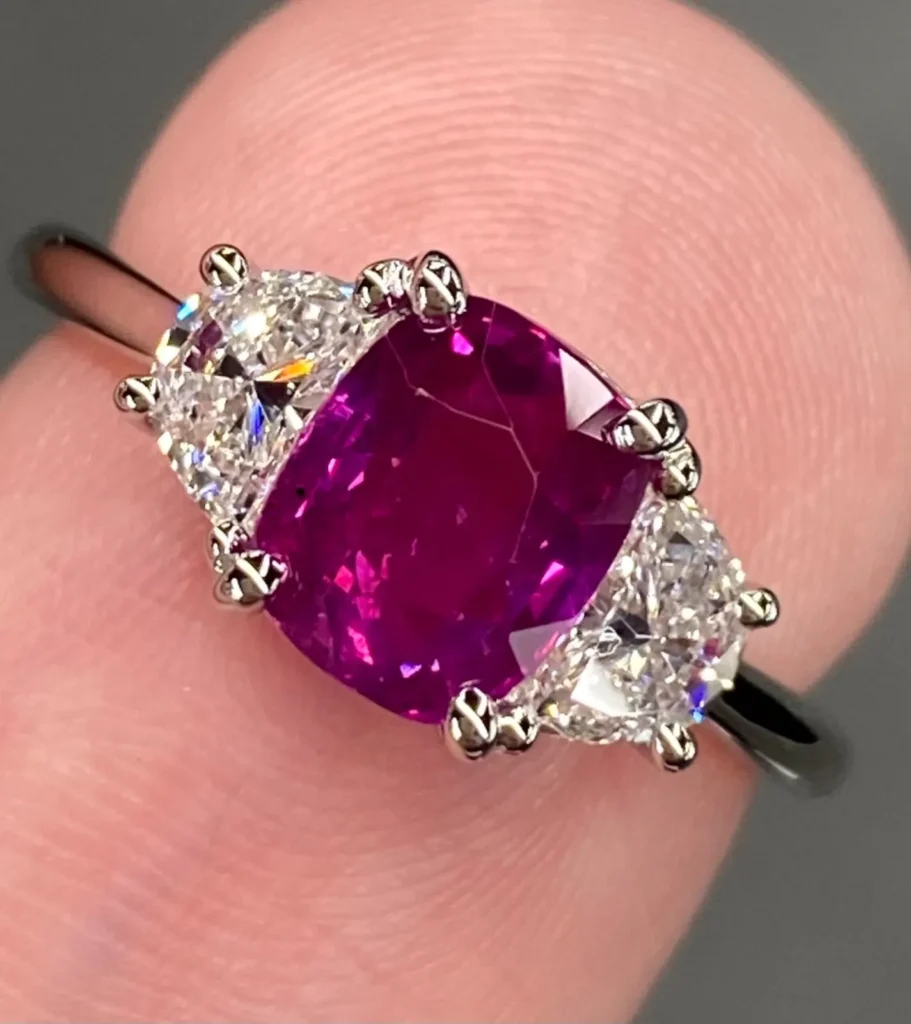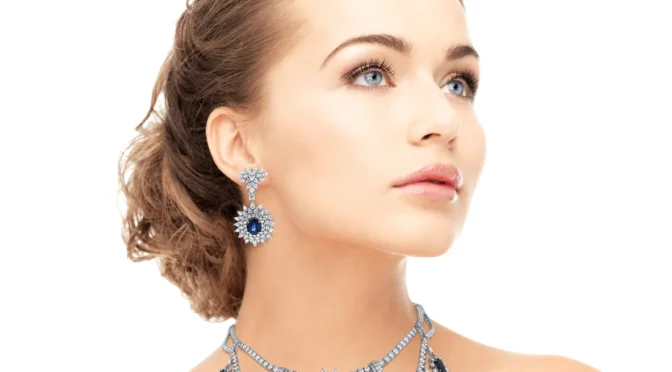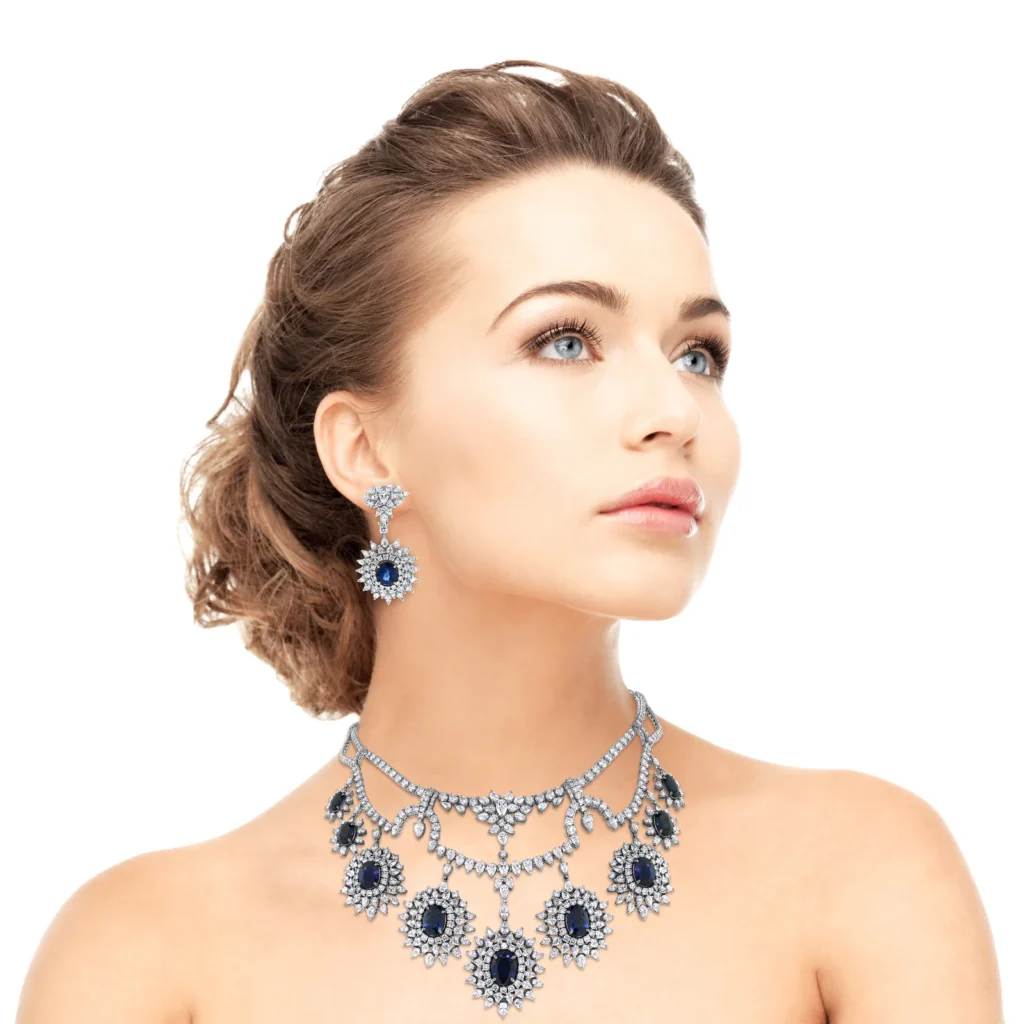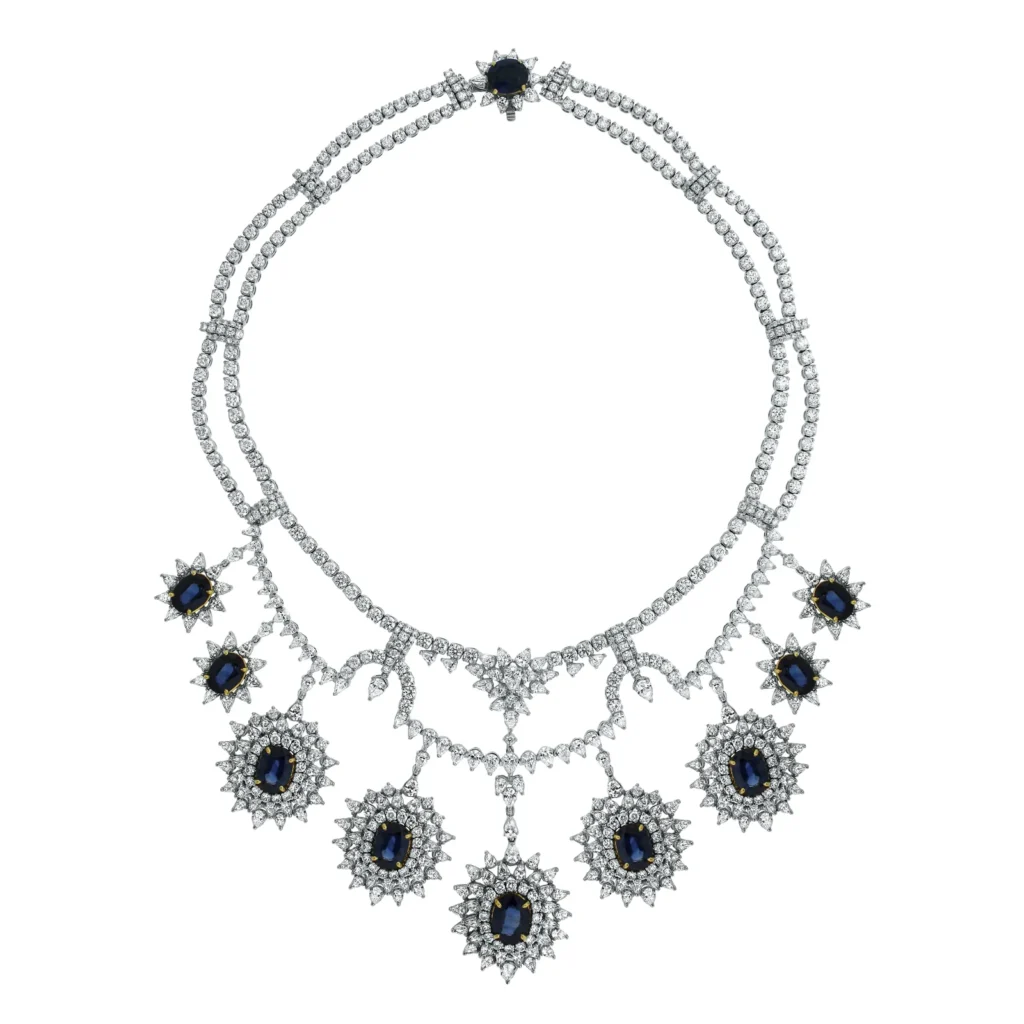GIA 2.29ct Natural Untreated Sapphire & 3.25ct Diamond 14K Gold Ballerina Ring
All posts by eyesdesire
Graff Ruby Diamond Ring
Charlize Theron wears a shimmering Boucheron choker and earrings
Charlize Theron wears a shimmering Boucheron choker and earrings.
Vintage 2.00 ct. t.w. Diamond Filigree Bangle Bracelet in 14kt White Gold
Greville Emerald Kokoshnik
Greville Emerald Kokoshnik. Today, we’ve got a rundown of the tiara’s fascinating journey from Boucheron to the royal vaults.
We now know that the diamond and emerald tiara was one of at least two diadems stashed in a black tin trunk that was delivered to Buckingham Palace in 1943. The trunk contained the jewels of the late Dame Margaret Greville, who had decided to bequeath the collection to her friend, Queen Elizabeth (the Queen Mother). Elizabeth adopted the other tiara from the bequest, the Greville Tiara, as one of her signature pieces, but for reasons unknown, she never wore the emerald kokoshnik in public.
It’s possible that kokoshniks simply weren’t the Queen Mum’s cup of tea. She had another kokoshnik tiara in her collection, the Persian Turquoise Tiara, altered so that it no longer had the typical halo shape of the style. She also revised the top line of the Greville Tiara so that it no longer resembled a traditional kokoshnik. It’s also possible, of course, that Elizabeth did wear the tiara privately, but we have no textual or photographic evidence of that. All we know for sure is that the tiara was deposited in her royal jewelry collection in 1943 and stayed there until her death in 2002. At that point, the jewel was inherited by her daughter, the present Queen, who has also never worn it in public.
There are, however, references available that demonstrate that Mrs. Greville wore the tiara herself after she acquired it in the years after World War I. In The Maggie Greville Story, Pam Burbidge cites several newspaper articles from the 1930s featuring mentions of Maggie wearing “her empire-shaped tiara of diamonds and emeralds.” One of those tiara appearances reportedly took place during the celebrations of the wedding of the Duke and Duchess of Kent in 1934. Burbidge also notes that a photograph of Maggie wearing the tiara, taken at a concert at the Austrian Legation in London in 1937, has also been located in a German archive.
The tiara is an exquisite example of early ’20s Art Deco design. The smooth diamond and platinum lines of the kokoshnik are interrupted by scalloped sections that echo the round cabochon shape of the piece’s central emerald cluster. That emerald measures at a whopping 93.70 carats. Six more (faceted) emeralds are set at regular intervals on each side of the tiara, which tapers pleasantly as it nearly encircles the wearer’s head, for a total of thirteen emeralds in the piece.
We know for certain that the tiara was made in Paris by Boucheron, but exactly when it was constructed appears to be a matter of debate. The Royal Collection has gone on record with 1919 as the date when the tiara was made. French royal jewelry historian Vincent Meylan disagrees. In his 2009 book on the Boucheron archives, he covers the client relationship between Mrs. Greville and the jewelry firm. When discussing the catalogue of purchases that Maggie made from the firm, he writes, “En 1921, c’est un bandeau de diamants orné d’une émeraude de 93.70 carats”—”in 1921, it was a diamond bandeau adorned with a 93.70-carat emerald.”
Meylan certainly had access to the company’s archive while writing his book—the book also includes a black-and-white photograph of the tiara, which was the only known image of the piece until its reemergence nine years later—but it’s certainly possible that the Royal Collection was also able to gain access to those same records when researching the piece for their own records. The Royal Collection has also quibbled with some of Meylan’s other claims about the provenance of the Greville jewels, most notably the Diamond Peardrop Earrings.
Winston Blue Diamond
Harry Winston’s “The Blue” diamond, a 13.22ct Fancy vivid blue pear-shaped diamond, is the largest flawless Fancy vivid blue diamond in the world.
The blue diamond is a fancy colored stone with a boron element in its symmetrical balance. These stones are found in Argyle Mine in Australia, Cullinan Mine In South Africa, and Golconda Mine Of India. There are very few resources and mines for bringing out natural blue diamonds.
Few American success stories rival that of Harry Winston. Born Harry Weinstein, he came from humble roots—his parents were poor Jewish immigrants who left Ukraine around 1890 for New York, where they settled and started a small jewelry business. His genius for spotting priceless gems emerged young. When Harry was twelve years old, he recognized a two-carat emerald in a pawn shop and bought it for 25 cents, selling it two days later for $800—a massive sum in the early 1900s. From that moment on, Harry became obsessed with gems, especially diamonds. A compact, unassuming man with no formal education, but unlimited drive and ambition, Harry Weinstein transformed himself into Harry Winston, the enigmatic figure who created the world’s most prestigious luxury brand.
Harry Winston built his empire while the Depression raged, World War II reshaped the world, and America entered its post-war period of prosperity. In this riveting biography, readers get a bird’s eye view of the dangers of the diamond trade and the lengths men would go to get their hands on the best of the “rough.” There’s also a glimpse into the lives of the rich and famous, who clamored for Winston’s gems. Although he traveled the world doing business with kings, queens, and movie stars, Winston remained a devoted family man, whose chief wish was that his sons carry on the legacy he had built.
Harry’s older son Ronald Winston worked alongside his father for decades. After Harry’s death, Ron grew the company into the international brand that is still revered today. He ran it expertly, until he was forced to sell the company, due to his younger brother’s maligning litigation. This is the story of a family business that survived and thrived for more than a century, until it was undone by one, bitter family member.


